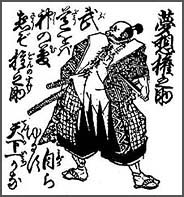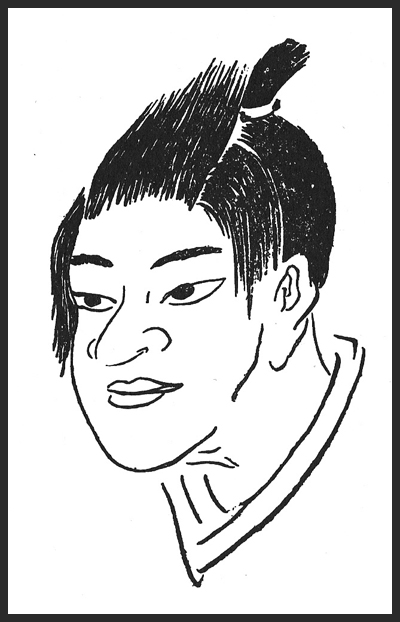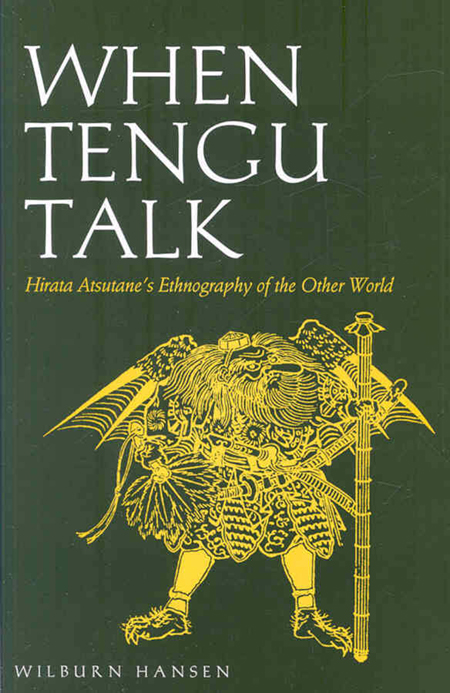. Onipedia - 鬼ペディア - Oni Demons - ABC-List - .
:::::::::::::::::::::::::::::::::::::::::::::::::::::::::::::::::::::::::::::::::::::::::::::::::::::::::::::::::::::::::::::::::::::::::::::::::::::::::::::::::::::::::::::::::::
Onipedia - 鬼ペディア - Oni Demons - ABC-List
.......................................................................................... onionioni ....................................................
Oni – The classic Japanese demon. It is an ogre-like creature which often has horns.
. Kihachi 鬼八(きはち) and 健磐龍命 Tateiwatatsu no Mikoto .
. Oni 鬼 Demon Amulets .
. Oni 鬼 Demon art motives - Gallery .
. Onibaba 鬼婆 The demon hag of Adachigahara .
(onibaba 鬼婆々 - 52 legends to explore)
..... Oita, Shiga
. Onibabari 鬼払い driving out the demons .
oniyarai 鬼遣らい / nayarai, na yarai 儺(な)やらい
. Onibashi 鬼橋 the Demon Bridge .
and Taishaku Ten
. Onibashiri 鬼走 running demons for Setsubun .
- and Oni eshiki 鬼会式 Demon Festival
. onibi 鬼火 "demon fire", "devil's fire" - Will-o'-the-wisp .
- kitsunebi 狐火 "fox fire"
. onibi no saiten 鬼火の祭典 ritual .
- at Kinpusen-Ji, Zao-Do, Nara
. onibue 鬼笛 "demon flute" .
..... aobabue 青葉笛flute with green bamboo leaves, priest Jōzō 浄蔵 Jozo (891 - 964)
onidaiko 鬼太鼓 great Demon drum, see
. ondeko 鬼太鼓 (おんでこ) Demon's Drums from Sado island 佐渡国 .
. onifu 鬼符 amulet to subpress demons . - from China
. Oni Fudoo 鬼不動 Oni Fudo Myo-O . - Fukui
. Onigadake, Onigatake 鬼ヶ岳 / Onidake, Onitake 鬼岳 mountai names .
..... Onigaoka 鬼が丘 / 鬼ヶ丘 "Deomon Hill"
. Onigajaya, Oni-Ga-Chaya 鬼ヶ茶屋 Oni teastall . - at Oeyama
Onigajoo 鬼ヶ城 / 鬼ケ城 Onigajo "Demon Castle"
There are quite a few to explore.
- . in Iwate 岩手県 - 鬼ケ城 .
- . in Mie, Kumano 三重県 Mie 熊野市 Kumano .
. in Nagano 小県郡 Chiisagata district 真田町 Sanada town .
. in Tottori 若桜鬼ヶ城 Wakasa Onigajo.
- . in Yamaguchi 山口県 - 鬼ヶ城.
- - - . Haiku about 鬼ヶ城 .
. onigani 鬼蟹 demon crabs and kani-oni 蟹鬼 Crab-Demon monster .
..... kimengani 鬼面蟹 crabs with demon faces // Heikegani 平家蟹
. Onigashima 鬼が島 / おにが島 Island where the Demons live .
- and Megishima 女木島 Megijima, Kagawa
. onigawara 鬼瓦 demon roof tiles .
. onigiri, oni-giri おにぎり/ お握り / 御握り rice balls as Demons - Setsubun .
. Onigo Matsuri 鬼子祭り "Demon Boys Festival" .
..... Kokuseki-Ji Naked Man Festival 黒石裸祭 Kuroishi Festival
. onigokko, oni-gokko 鬼ごっこ game of tag / onigoto 鬼ごと .
ko o toro ko toro 子をとろ子とろ / 子を捕ろ子捕ろ "get hold of a child, get it!"
. Onigomori 鬼籠 Kiko - Oita .
. Onihagi 鬼萩 "Demon Hagi" 萩焼 Hagi-yaki pottery .
. Onihakamura 鬼墓村 "village of the Demon grave .
Onihitokuchi, oni hitokuchi 鬼一口 One-eyed demons that kill and eat humans.
- source : Matthew Meyer -
. Oni jinja 鬼神社 "Demon Shrine"list of Shinto shrines with ONI .
. oni kenbai 鬼剣舞 "demon sword dance" Iwate .
. oniko, oni-ko 鬼子 Oni from Tsugaru, Aomori .
..... torii no oniko 鳥居の鬼コ Demons of the Toorii gates
鬼子 - also read as kishi and onigo
. oniko 鬼鼓 demon drum .
. Onikobe village 鬼首村 "Demon Head Village" Miyagi .
. Onikobe Kaido 鬼首街道 Onikobe Highway - "Demon Head Highway" .
Onikoobe onsen 鬼首温泉 Onikobe Hot Spring / 鬼首峠 Onikobe Toge pass
. onikura 鬼倉 the storehouse of the demons / オニフスベ oni fusube.
..... Calvatia nipponica (onifusube mushroom オニフスベ)
. onimanjuu, oni manjuu 鬼饅頭 demon's cakes .
This is a local souvenir in rememberance of the 大江山鬼伝説 Demon Legend of Oeyama Mountain
. onimatsu 鬼松 demon pine tree .
. oni matsuri 鬼祭り Demon Festivals of Japan .
***** . Onimusha 鬼武者 Demon Warrior / Manga Onimusha: Warlords .
(? - 1603) Ninja, Fuuma Kootaroo, Fūma Kotarō 風魔小太郎 Fuma Kotaro
oni-musume 鬼娘 demon daughter
. oni ni naru 鬼になる to become a demon .
.......................................................................
. oni no hi 鬼の碑 memorial stone of an Oni .
..... oni no kooshintoo 鬼の庚申塔 Oni no Koshin-To stone
. oni no ido 鬼の井戸 the well of the Demon .
oni no iwaya 鬼の岩屋 - 2 legends to explore
..... Shuten Doji
oni no kan 鬼の館 Oni Museum
..... 「鬼」という文字の解説 - explaining the character for ONI
. Kitakami 北上市・鬼の館 . *
. oni no kan nenbutsu 鬼の寒念仏 - 大津絵 Otsu-E pictures .
Oni no nenbutsu, nembutsu 鬼の念仏 demon praying in the cold
. Oni no manaita 鬼の俎 / 鬼のまな板 "Devil's cutting board" .
and - Oni no Setchin 鬼の雪隠 "Devil's lavatory" "Demon's toilet" - stone formations in Asukamura, Nara
. oni no miira 鬼のミイラ mummy of an Oni .
. oni no sato 鬼の里 villages with Oni legends . *
. oni no satori 鬼の悟り enlightenment of an Oni .
. oni no yado 鬼の宿 - ritual at Setsubun .
天河神社 - Tenkawa Jinja, Nara
. oni no zashiki"鬼の座敷 "Living room of the Oni". - Aichi
.......................................................................
. oni nori Issun Boshi 鬼乗り一寸法師 riding a demon .
. Onioi matsuri, oni-oi matsuri 鬼追い祭り .
at Kumano shrine 熊野神社, Soo town 曽於市, Miyazaki
. oniokoze, oni-okoze オニオコゼ(鬼鰧、鬼虎魚) Inimicus japonicus - devil stonefish .
22 legends to explore
. Onimaru 鬼丸 / 鬼切丸 Onikirimaru sword .
- dooji kirimaru 童子切丸 Doji Killer Blade
onimatsu 鬼松 demon pine tree
1 to explore
. Oni no Ishimaru 鬼の石丸, Fujioka . - Gunma
. oni no shison 鬼の子孫 / onisuji 鬼筋 - descendants of Oni .
Yase Dooji 八瀬童子 Yase Doji, Yase no Doji, Hase Doji
. onishi, oni-ishi, oniishi 鬼石 Onishi Demon Stone -"ogre stone" .
鬼石原 Oniishihara in Miyagi / Onishi Jinja 鬼石神社 Onishi Shrine - 鬼石明神 Onishi Myojin
Oniishi Bozu Jigoku 鬼石坊主地獄 Beppu, Oita / Oniishi no Yu 鬼石の湯 Hot Spring
鬼場 Oniba, Chino town, Nagano
. oni shookan 鬼将官 Oni Shokan, "Demon General" 加藤清正 Kato Kiyomasa .
. onisube, oni sube 鬼すべ "smoking out the demons" ritual .
..... 大宰府天満宮 Dasaifu Tenmangu
onitaiji, oni taiji 鬼退治 driving out the demons
during the Setsubun rituals and in regional legends
26 to explore - (Oni ?in jigoku hell)
. Onitake - 鬼獄神社 Onitake Jinja / 鬼嶽稲荷神社 Onitake Inari Jinja .
. . . . . oni to bijutsu 鬼と美術 - Japanese Demons and Art
- - - - - . oni omamori 鬼お守り Demon Amulets .
oni to natta onna 鬼になった女 the woman who became an Oni (Aichi)
. Onitorichoo 鬼取町 Onitori Cho village . -Nara
and Onitorisan 鬼取山 "Mountain of capturing the Demons" Zenki and Goki
. Onitsura 上島鬼貫 Uejima Onitsura (1660 - 1738) . - Haiku Poet
. oniuchigi, oni uchigi 鬼打木 firewood to ward off the demons .
onigi 鬼木(おにぎ) "demon's firewood" / oniyokegi 鬼除木 /firewood to keep the demons away
..... onisaegi, oni saegi 鬼障木 / onioshigi 鬼押木 / oniuchiboo, oni uchiboo 鬼打棒
. oniuchi, oni uchi matsuri 鬼打ち祭 festival of hitting the demons .
..... saru-oni 猿鬼 Monkey-Demon
. Oni Udon 鬼うどん Noodle Restaurant / Chichibu, 定峰峠の鬼うどん .
. Oniwakamaru 鬼若丸 - Musashibo Benkei .
. oni wa soto 鬼は外 "Demons, get out!" .
. oni wa uchi 鬼は内 Demons come in! .
oni MO uchi 鬼も内 (Good luck come in and) Demons come in! - chanting at Setsubun
. oniyama 鬼山, oni to yama 鬼と山 mountain names and Oni demons .
. Oniyashiki 鬼屋敷 Oni Yashiki quarters .
. oniyo 鬼夜 "demon's night" fire festival .
..... Daizenji Town, Kurume, Fukuoka
. oniyoozu 鬼揚子 Oniyozu kite .
oniyu 鬼湯 hot spring - see below, onsen
. Onizawa 鬼沢 town in Tsugaru, Aomori .
. onizuka 鬼塚 / オニヅカ Demon Mound and Kofun .
- Ushioni-Zuka 牛鬼塚
----- If you did not find your ONI keyword here, please check a long list with ONI proverbs:
. 鬼とことわざ ONI to kotowaza - proverbs and sayings with demons .
..............................................................................................................................................
back to the
. Onipedia - 鬼ペディア - Oni Demons - ABC-List - .
:::::::::::::::::::::::::::::::::::::::::::::::::::::::::::::::::::::::::::::::::::::::::::::::::::::::::::::::::::::::::::::::::::::::::::::::::::::::::::::::::::::::::::::::::::
. - - - Join the Onipedia friends on facebook ! - - - .
:::::::::::::::::::::::::::::::::::::::::::::::::::::::::::::::::::::::::::::::::::::::::::::::::::::::::::::::::::::::::::::::::::::::::::::::::::::::::::::::::::::::::::::::::::
. Onipedia - 鬼ペディア - Oni Demons - ABC-List - .
. Tengu 天狗と伝説 Tengu legends "Long-nosed Goblin" .
. yookai, yōkai 妖怪 Yokai monsters .
. Legends and Tales from Japan 伝説 - Introduction .
. Mingei 民芸 Regional Folk Art from Japan .
:::::::::::::::::::::::::::::::::::::::::::::::::::::::::::::::::::::::::::::::::::::::::::::::::::::::::::::::::::::::::::::::::::::::::::::::::::::::::::::::::::::::::::::::::::
[ . BACK to DARUMA MUSEUM TOP . ]
[ . BACK to WORLDKIGO . TOP . ]
- #onidemons #oniabc #onipedia ##oni -
:::::::::::::::::::::::::::::::::::::::::::::::::::::::::::::::::::::::::::::::::::::::::::::::::::::::::::::::::::::::::::::::::::::::::::::::::::::::::::::::::::::::::::::::::::

































